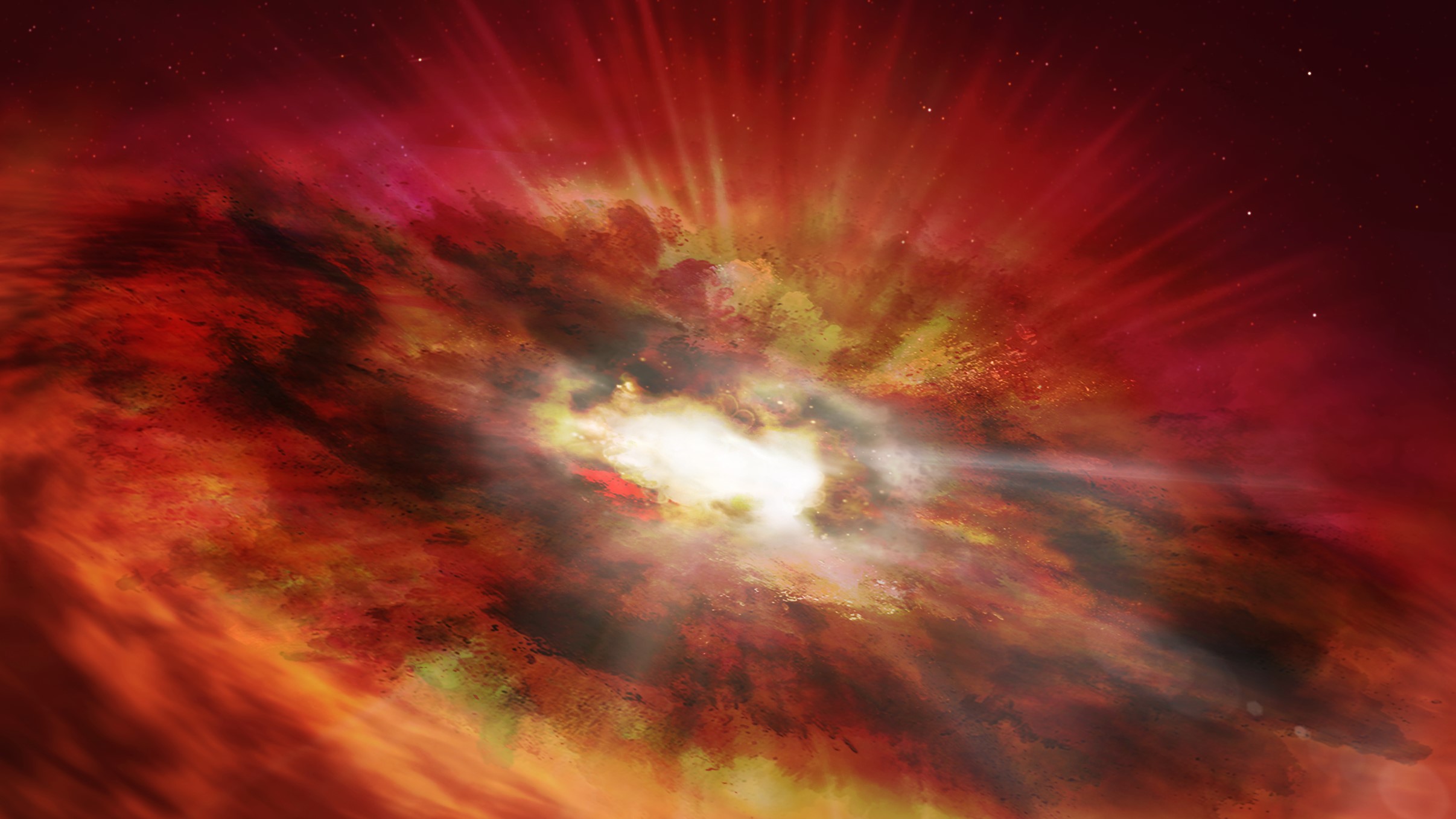James Webb Space Telescope will study how the 1st black hole 'seeds' formed in the 'baby universe'

NASA's James Webb Space Telescope is gearing up to start operations this summer, and one of its many assignments will be to search for primeval black holes in the early universe.
A supermassive black hole is believed to lie at the center of almost every large galaxy. These black holes range from millions to billions of times the mass of the sun and gobble up any surrounding material that gets too close.
A recent image from the Event Horizon Telescope captured a stunning view of Sagittarius A*, the supermassive black hole at the center of our galaxy, the Milky Way. Soon, the James Webb Space Telescope — the largest and most expensive and complex space telescope ever built — will help answer how galaxies like ours came to host such a massive central black hole.
Related: James Webb telescope: How it could uncover some of the universe's best-kept secrets
"An intriguing recent finding has been the discovery of hyper-massive black holes, with masses of several billion solar masses, already in place when the universe was only about 700 million years old — a small fraction of its current age of 13.8 billion years," Roberto Maiolino, a member of the Near-Infrared Spectrograph (NIRSpec) instrument science team for the James Webb Space Telescope, said in a NASA blog post. "This is a puzzling result, as at such early epochs, there is not enough time to grow such hyper-massive black holes, according to standard theories."
A black hole is formed when a large star burns through the last of its fuel and collapses or falls into itself. The density of these objects creates an incredibly strong gravitational force, which pulls in surrounding dust and gas, causing the black hole to grow.
To help explain how some black holes grow surprisingly large even at a young age, researchers suggest that the black holes accrete material at exceptionally high rates. Alternatively, these early black holes may form from stellar collisions, merging black holes or the collapse of primeval gas clouds not yet enriched by chemical elements heavier than helium, Maiolino explained.
Get the Space.com Newsletter
Breaking space news, the latest updates on rocket launches, skywatching events and more!
The NIRSpec instrument aboard the James Webb Space Telescope is designed to help identify primeval black hole seeds and signatures of "active phases," during which black holes grow rapidly by consuming a lot of surrounding matter, which, in turn, becomes hot and luminous. NIRSpec will help observe the light emitted by these ravenous systems and measure the velocity of the gas orbiting in the vicinity of these black hole progenitors, according to the NASA blog post.
"Webb is about to open a completely new discovery space in this area," Maiolino said. "It is possible that the first black hole seeds originally formed in the 'baby universe,' within just a few million years after the Big Bang. Webb is the perfect 'time machine' to learn about these primeval objects. Its exceptional sensitivity makes Webb capable of detecting extremely distant galaxies, and because of the time required for the light emitted by the galaxies to travel to us, we will see them as they were in the remote past."
Follow Samantha Mathewson @Sam_Ashley13. Follow us on Twitter @Spacedotcom and on Facebook.
Join our Space Forums to keep talking space on the latest missions, night sky and more! And if you have a news tip, correction or comment, let us know at: community@space.com.

Samantha Mathewson joined Space.com as an intern in the summer of 2016. She received a B.A. in Journalism and Environmental Science at the University of New Haven, in Connecticut. Previously, her work has been published in Nature World News. When not writing or reading about science, Samantha enjoys traveling to new places and taking photos! You can follow her on Twitter @Sam_Ashley13.









